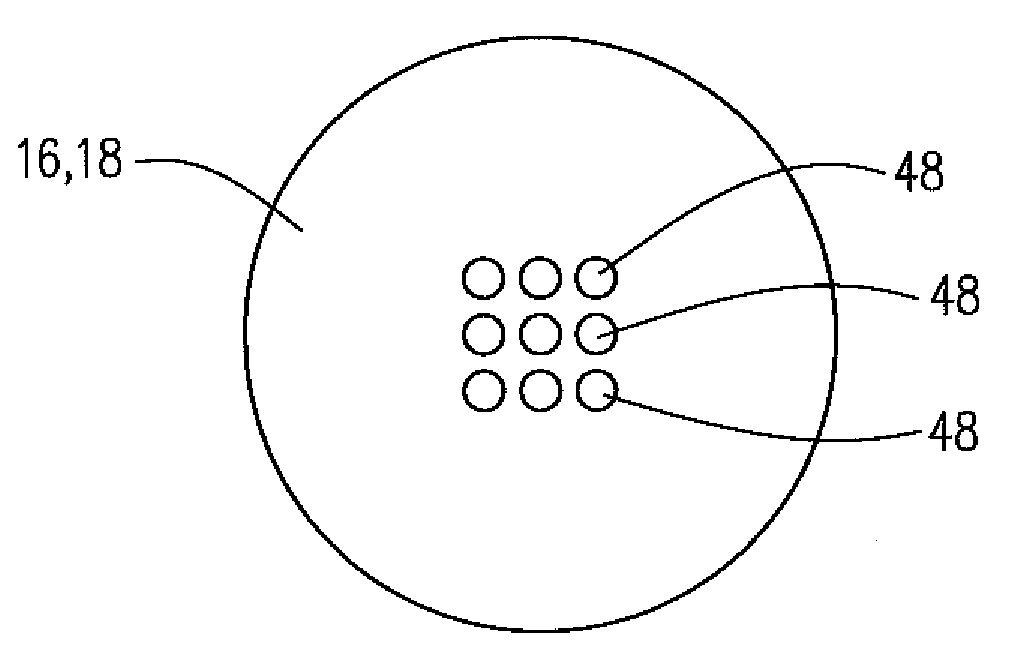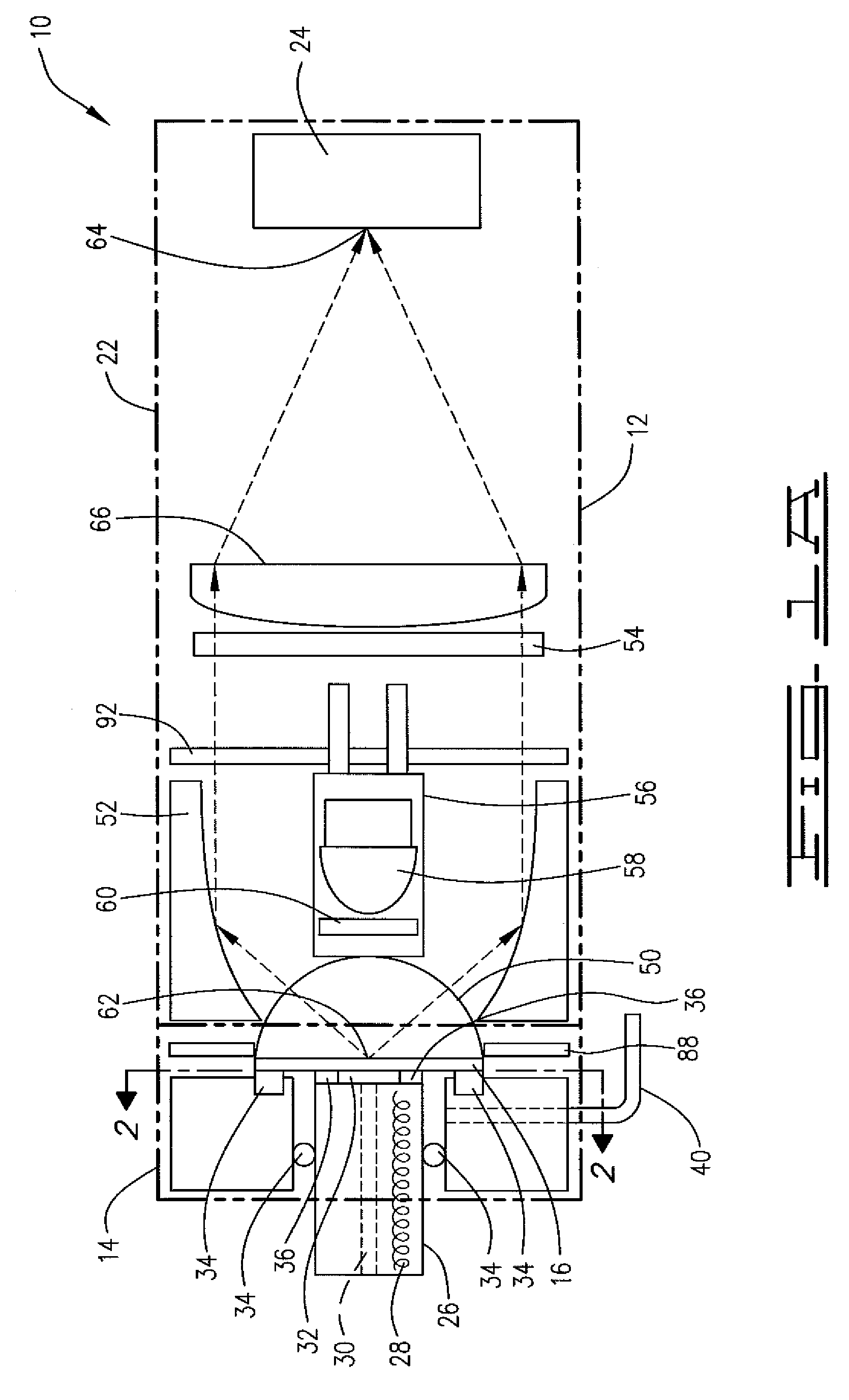[0028]Another embodiment of this invention is a
fluorescence collection optical
system. The
fluorescence collection optical
system has an ellipsoidal mirror. An emission source is optically positioned at the first foci of the ellipsoidal mirror. The emission source preferably comprises a
surface plasmon coupled emission slide and fluorescence material coated on a reacting side of the
surface plasmon coupled emission slide. The surface
plasmon coupled emission slide is preferably a multilayered slide that is capable of redistributing the emission from the fluorescence material. The surface
plasmon coupled emission slide has multiple metallic and
dielectric thin
layers coated on a transparent substrate. Preferably, the thickness and the
refractive index of the
dielectric layer specify the surface
plasmon coupled emission angle. The surface plasmon coupled emission slide preferably has a reacting side and a mounting side. A reactive
coating is positioned on the reacting side. The reactive coating on the reacting side of the surface plasmon coupled emission slide is comprised of fluorescence material such as CWIC or AFP. There is an emission source deposited on the reactive coating. Preferably, the emission source is a fluorescence material such as CWIC or AFP. The mounting side of the slide is attached to the flat side of a half-ball
prism lens with
index matching material. Preferably, the
index matching material is an
optical index matching fluid. The emission source has an
analyte transport fluid flowing across and contacting the reacting side of the surface plasmon coupled emission slide. The emission source produces an excited emission
light wave, such as the fluorescence, when stimulated. The excited emission light redistributed by the surface plasmon couple emission mechanism is hence allowed to penetrate through the substrate of the surface plasmon coupled emission slide and the index matched half-ball
prism lens. The presence of the
prism lens allows the excited emission light to exit the prism lens without being trapped by the
total internal reflection.
[0029]In the fluorescence collection optical system, the excitation
assembly contains an
excitation filter and a
light source. The excitation
assembly is affixed to the back of the half-ball prism lens. The
excitation filter is positioned between the
light source and the half-ball prism lens. The
light source provides the stimulus to excite the emission source through the
excitation filter and is loosely focused by the half-ball prism lens. A
spatial filter is inserted in the
optical path to filter any
light wave traveling within the ellipsoidal mirror. The
spatial filter limits the angle of the reflected emission of the excited
light wave, and blocks the undesired light such as the scattered excitation and ambient light. The
spatial filter is configured to allow the excited emission light wave to pass through with specified transmission angles
ranging from 55 degrees to about 85 degrees. The excitation
assembly affixed to the back of the half-ball prism lens blocks any light wave with a transmission angle of less than 55 degrees. An emission detection sensor is positioned at the second foci of the ellipsoidal mirror. The emission detection sensor is preferably a
photodetector used in conjunction with an
optical filter having a band-pass matched to the emitter. The
photodetector is capable of receiving the spatially filtered excited emission light wave through another emission filter. The emission filter provides additional
spectral filtering, and increases the
signal-to-
noise ratio of the collection emission signal.
[0035]Preferably, the compact optical emission collection device propagates the emission light along the concaved internal surface inside the reverse half-ball prism lens providing an emission light path which is
proximate to the air / prism lens interface. The excitation light source assembly, which includes a light source and an excitation filter, is preferably embedded in the prism lens
proximate to a flattened vertex. The excitation light source is preferably positioned such that the emission light path is not obstructed by the assembly. The embedded excitation assembly allows the light receiving assembly, which includes the spatial filter, spectral filter, and the
photodetector, to be proximately positioned to the substantially flat surface of the prism lens. A molded
optics fabrication process may be used to encapsulate the light source and the excitation filter into a half spherical dome to realize a very compact excitation and collection optical stack.
 Login to View More
Login to View More  Login to View More
Login to View More 


